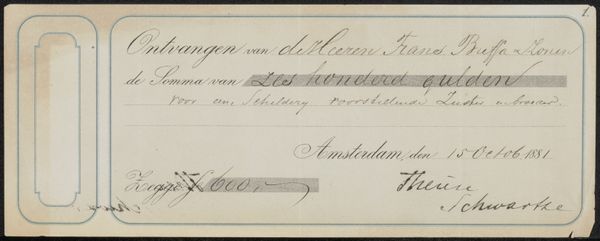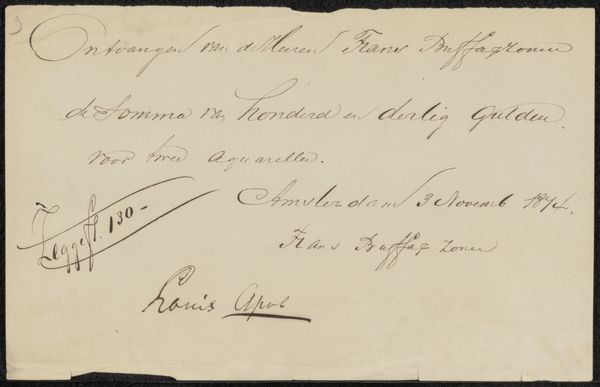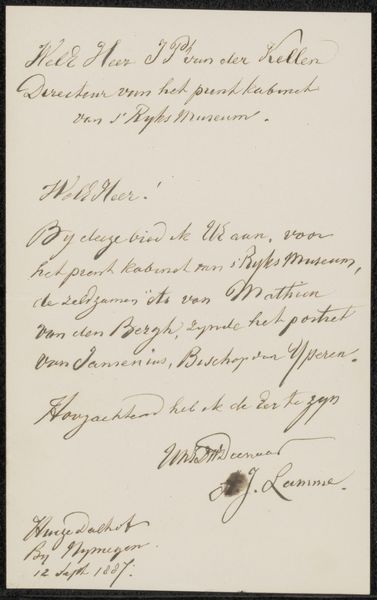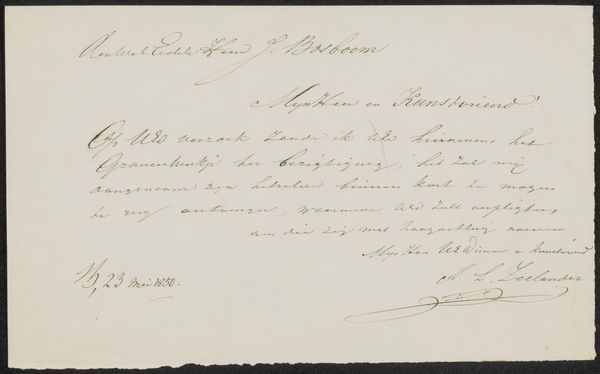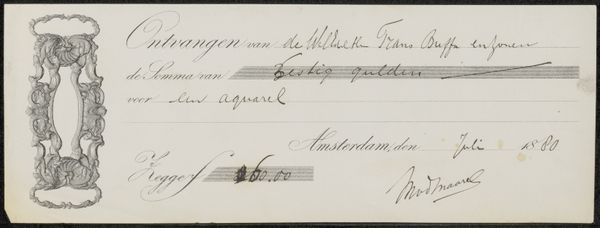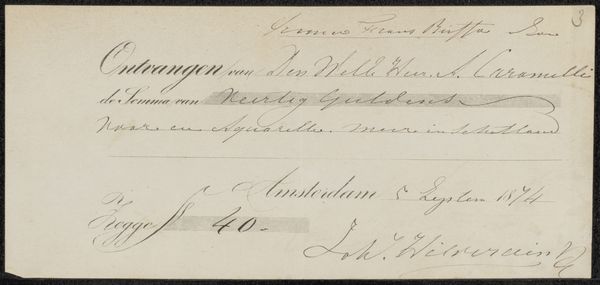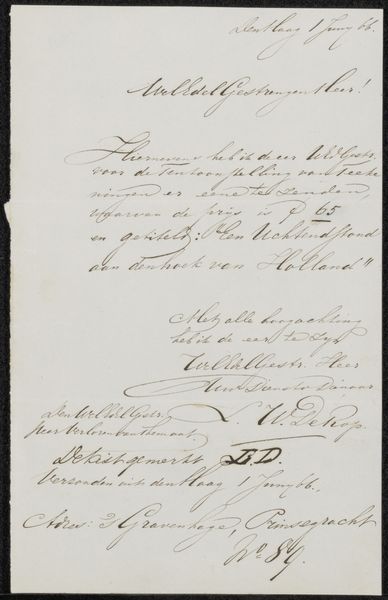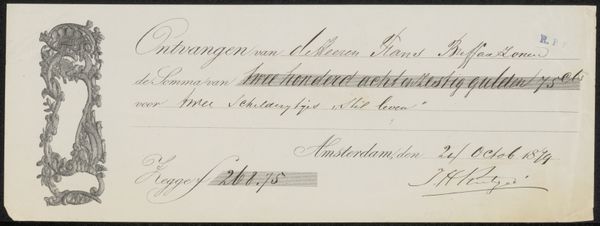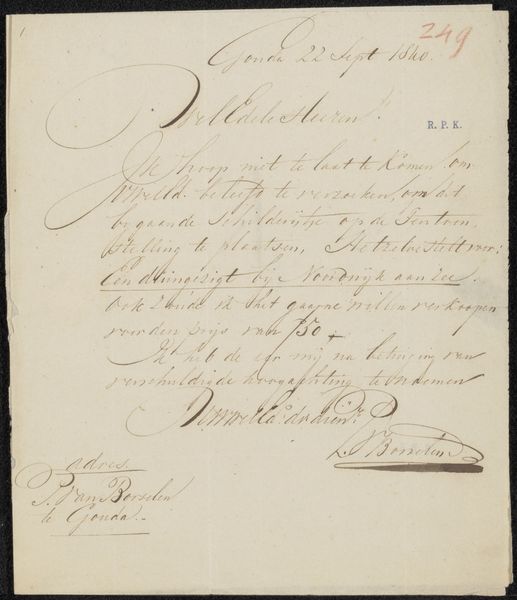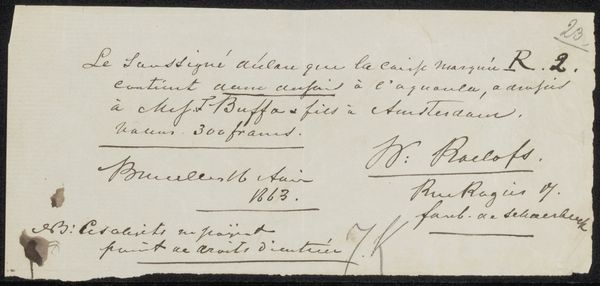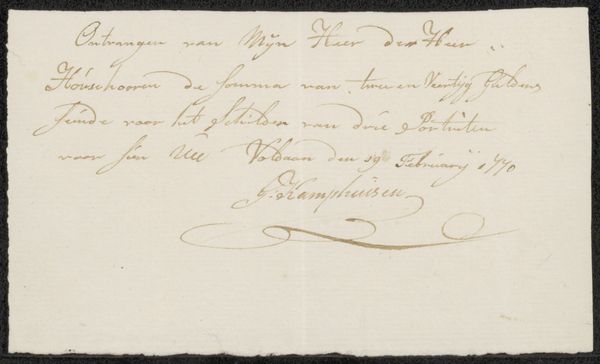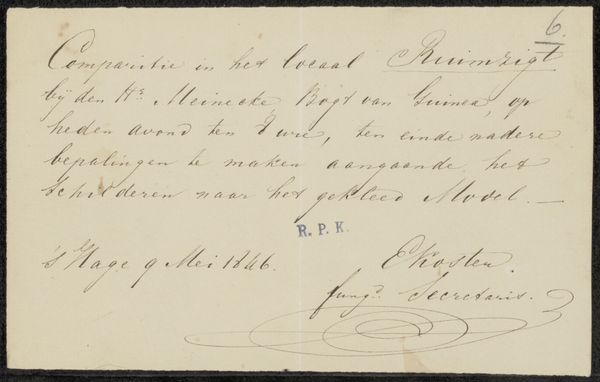
drawing, paper, ink
#
drawing
#
paper
#
ink
#
genre-painting
#
calligraphy
Copyright: Rijks Museum: Open Domain
This is a receipt made by Willem Johann Martens in Amsterdam, dated November 3, 1874. It documents a payment from Frans Buffa en Zonen for four watercolors. Receipts like this are revealing cultural artifacts. They speak not only to the economic realities of the art world but also the social networks that sustained it. In the 19th century, the art market was deeply entwined with notions of class and status, influencing who could afford art and whose work was valued. The delicate script itself is a testament to the era's emphasis on refinement and elegance. The act of commissioning art was often a performative display of wealth and taste, reinforcing existing social hierarchies. Consider, too, how the choice of watercolor as a medium might reflect societal expectations. Watercolors were sometimes viewed as less prestigious than oil paintings, often associated with feminine artistic pursuits. As you look at this receipt, think about the complex interplay of economics, gender, and social status that shaped the art world of the 19th century, and how these dynamics continue to resonate today.
Comments
No comments
Be the first to comment and join the conversation on the ultimate creative platform.
